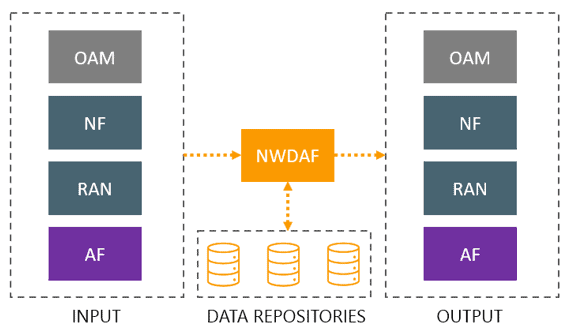With speeds nearly 100 times faster and latency 90% lower than 4G, 5G is the transformative force operators and their customers have been waiting for.
The promise is so big that 5G subscriptions are projected to reach 2.8 billion by the end of 2024 and 5.9 billion by 2027. And 5G-generated annual sales are expected to reach $331.1 billion by 2027.
The 5G challenge
Yet, alongside the opportunity, there are also some formidable challenges. Among them is ensuring high-performance levels and customer satisfaction while minimizing costs and driving lean operations.
And today, meeting this mandate is more critical than ever. On the one hand, with 5G capex expected to be at an average of $32 billion annually through 2025, operators are under extreme pressure to control costs and optimize operational efficiency.
On the other hand, in a market where competition is fierce and switching service providers has become too easy for subscribers, keeping customers happy without increasing expenditure is all the more difficult.
In comes network automation
The good news is that overcoming the performance, satisfaction, cost, and efficiency challenge is not out of reach, that is – if you can:

Track and analyze
Ever-growing masses of network, traffic, and customer data

Gain
Insights that are
actionable in real-time

Identify, flag, and resolve
Quality impacting issues
with minimal manual intervention
And while these are no simple tasks, it is possible to make it happen with network automation.
But it’s not just any network automation that will do. Maximizing the potential of network automation for cost reductions and operational efficiency requires AI/ML-driven assurance and network data analytics (i.e., NWDAF).
The network automation advantage
The automation advantage is well known to organizations across multiple industries – speed, error-free processes, and doing more with less.
For operators, network automation specifically brings strategic telco-centric benefits, such as:
- Automated network fault detection reduces mean time to resolution (MTTR) and enables network engineers to focus on vital tasks such as root cause analysis.
- Automated performance monitoring eliminates the overhead of alert storms and frees up the team to optimize the network instead of investigating every potential issue.
- Automatically detect and resolve network degradations and do so quickly and efficiently without bringing in analysts and engineers.
The case of Rakuten Mobile and Dish Network
We have seen recently that operators who are building greenfield networks with extensive automation that is powered by AI/ML-driven assurance and NWDAF, are those who can gain the unprecedented efficiencies they need for controlling costs while tapping into the 5G opportunity.
Rakuten Mobile in Japan and Dish Network in the US are two such operators.
Rakuten Mobile
In 2021, Rakuten Mobile set up a network with built-in automation (see case study). This enables the operator to manage the network with only 250 people instead of the thousands its competitors require. So, rather than having an engineer check every alert and spend precious time fixing it, trends are being tracked, and alerts are initiated automatically. The result is resolutions achieved faster, at a lower cost, and with greater operational efficiency.
Dish Network
As for Dish Network, this operator leverages automation to monitor and analyze service quality across its US cloud-native, Open RAN-based 5G network. This way, issues can be detected and resolved faster, more efficiently, and at lower engineering costs.
Taking network automation to the next level
Automated assurance and the NWDAF powered by artificial intelligence and machine learning (AI/ML) are the keys to maximizing network automation’s cost and operational benefits.
Automated assurance
Automated assurance delivers the data and insights operators need to understand what’s happening inside their network so they can:
- Get complete visibility into their 5G network
- Detect issues before they impact the business
- Troubleshoot issues faster and more efficiently
NWDAF
With the network data analytics function, operators can automate data collection from other network functions and gain standards-based, telco-specific analytics and insights that improve automation and optimization decisions.

The power of AI/ML
Where automated assurance and the NWDAF are the key to bringing the promise of network automation to life, the fuel that drives all this is 5G AI analytics. AI/ML learns typical network trends for detecting anomalies when they occur. When automated alerts are delivered with AI-infused analytics, operators can filter out the noise, stay on top of what’s happening in the network, and prioritize tasks based on customer impact.
The power of AI/ML for automating the 5G network
- Learning baseline behaviors and creating thresholds
- Detecting network anomalies
- Accelerating degradation resolution
- Optimizing capacity planning
How RADCOM can help
RADCOM brings real-time data and AI/ML-powered analytics and insights to network automation that help operators reduce costs and drive lean operations.
RADCOM ACE delivers automated assurance with advanced network insights.
RADCOM NWDAF provides automated, AI/ML-based analytics
for closed-loop, zero-touch network automation.
To learn more about how RADCOM can help you save costs and drive lean operations with automated assurance and NWDAF for network automation, come visit us at MWC 2024. Set a meeting to discuss.

